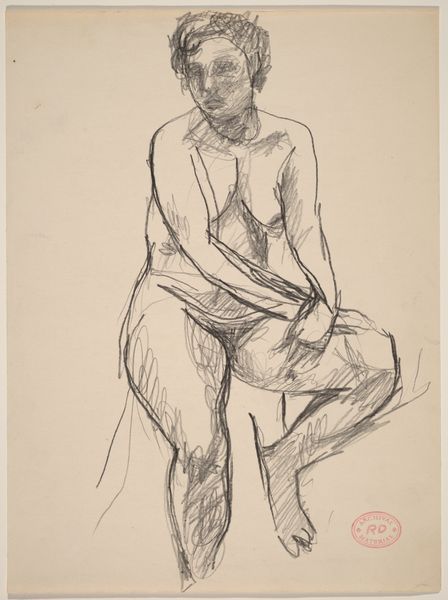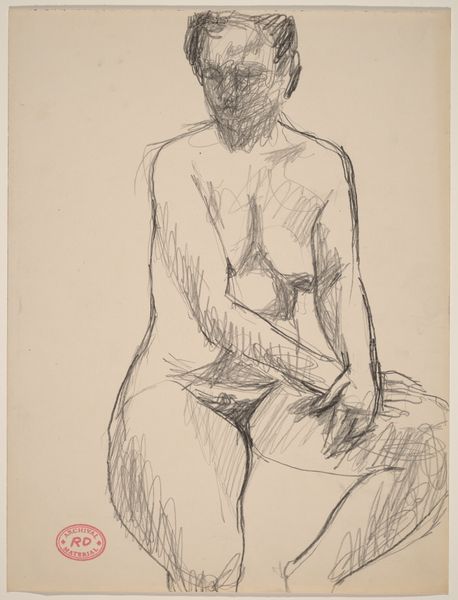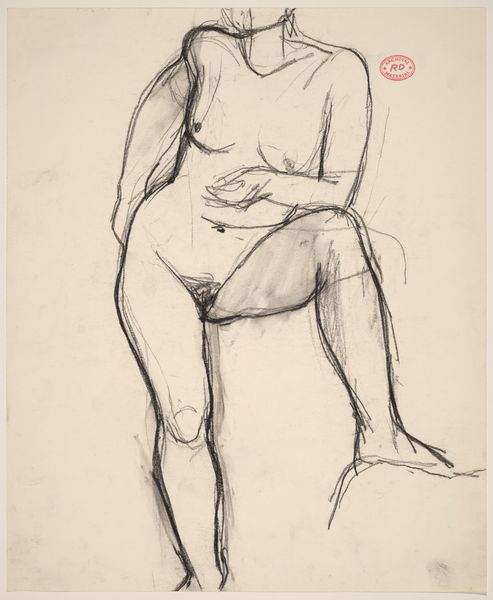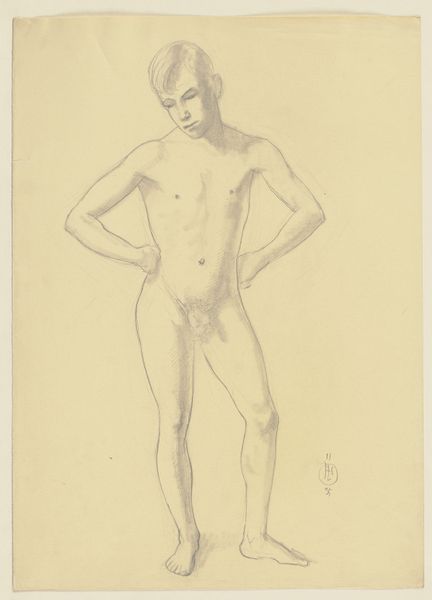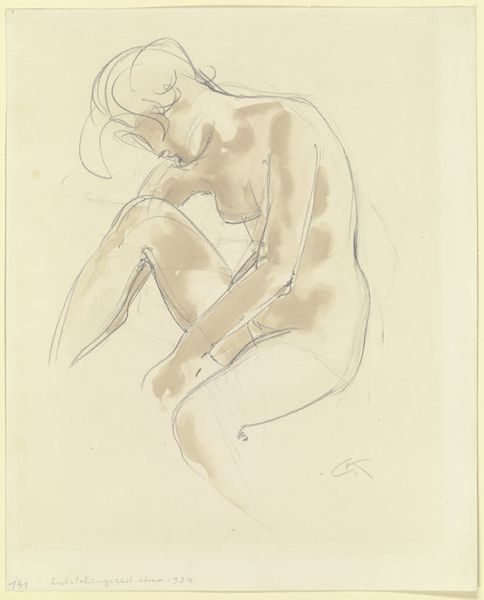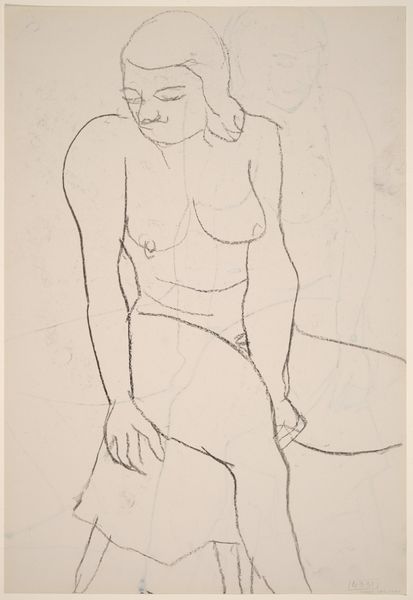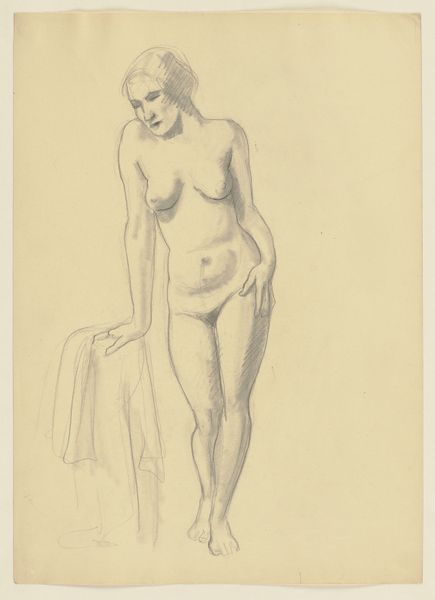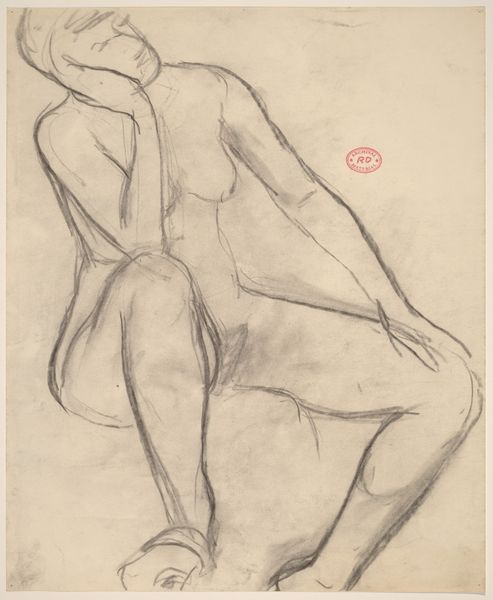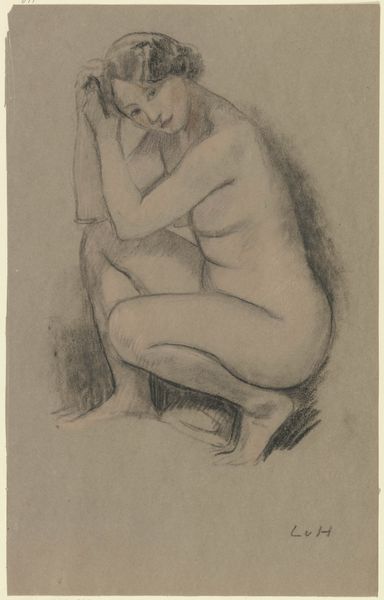
drawing, paper, pencil
#
portrait
#
drawing
#
paper
#
portrait reference
#
pencil
#
nude
#
realism
Copyright: Public Domain
Curator: Immediately, I notice how softly rendered the subject is, an intimate study. Editor: Let’s take a closer look at this pencil drawing entitled "Female Nude" by Hermann Lismann, created in 1934, currently housed in the Städel Museum. I find myself immediately thinking about the accessibility of the paper medium. Curator: The choice of a modest material, paper, accessible and affordable, allows for a fluidity of expression that translates into the ethereal nature of the image itself. Was Lismann perhaps engaging in artistic expression despite socio-economic constraints of the period? Editor: Well, this drawing was made during a tumultuous period. Given that the Nazis began systematically removing modernist art from German museums in 1933, what kind of imagery was officially sanctioned becomes a crucial question. How might the very act of depicting the nude female form, even in this relatively conventional style, be interpreted within the socio-political climate? Curator: Indeed. And the artistic process itself becomes an act of subtle rebellion. One has to admire the precision, the skillful manipulation of pencil strokes on the humble paper canvas. There is also a distinct contrast here. The medium being unassuming yet allowing Lismann to evoke a sense of timeless grace and dignity. Was it simply for preparatory studies or did the paper hold inherent artistic merit? Editor: That´s a very important point about purpose and material. The relative permanence attributed to artworks by exhibiting them affects our understanding of their making and intent. Was it meant for private consumption or public display? Curator: It is a piece that makes us question not only the physical reality of the materials involved but the artist’s deliberate choices in using such materials as well as challenging traditional hierarchies between so-called high art and works of craft. Editor: Agreed. By looking at this drawing, it is difficult to see through Lismann's intentions; his piece remains a testament to the layered dialogues between artistic representation and its political time. Curator: An excellent observation!
Comments
No comments
Be the first to comment and join the conversation on the ultimate creative platform.
